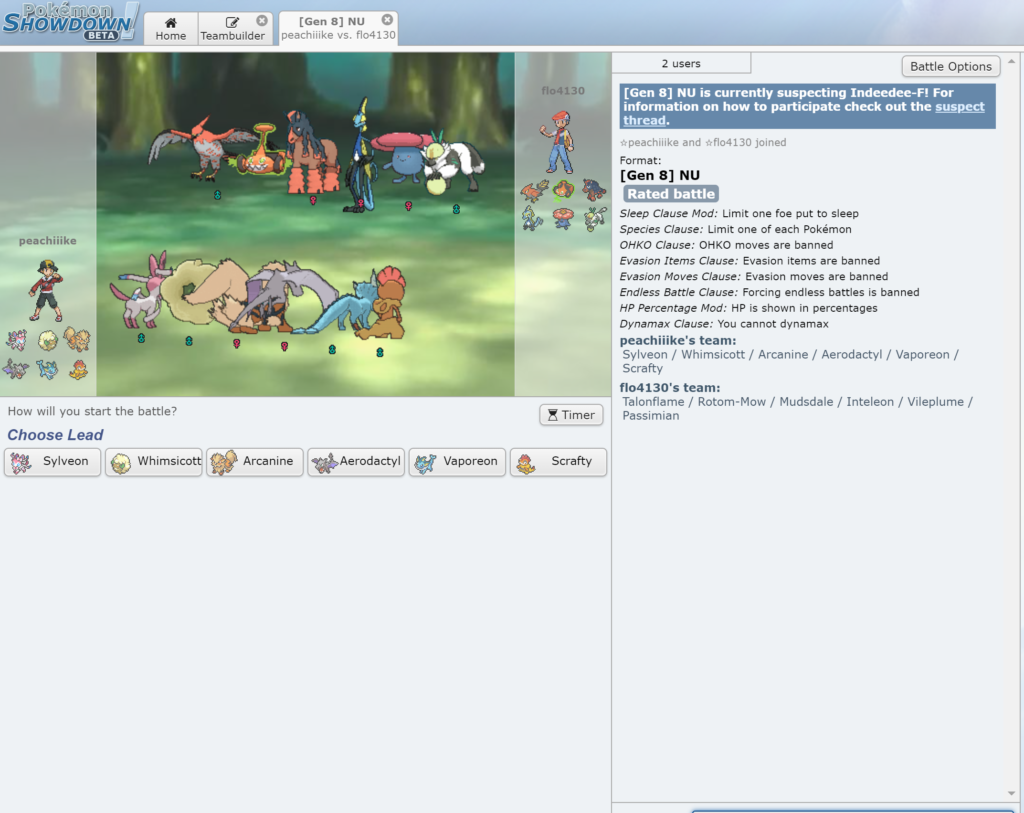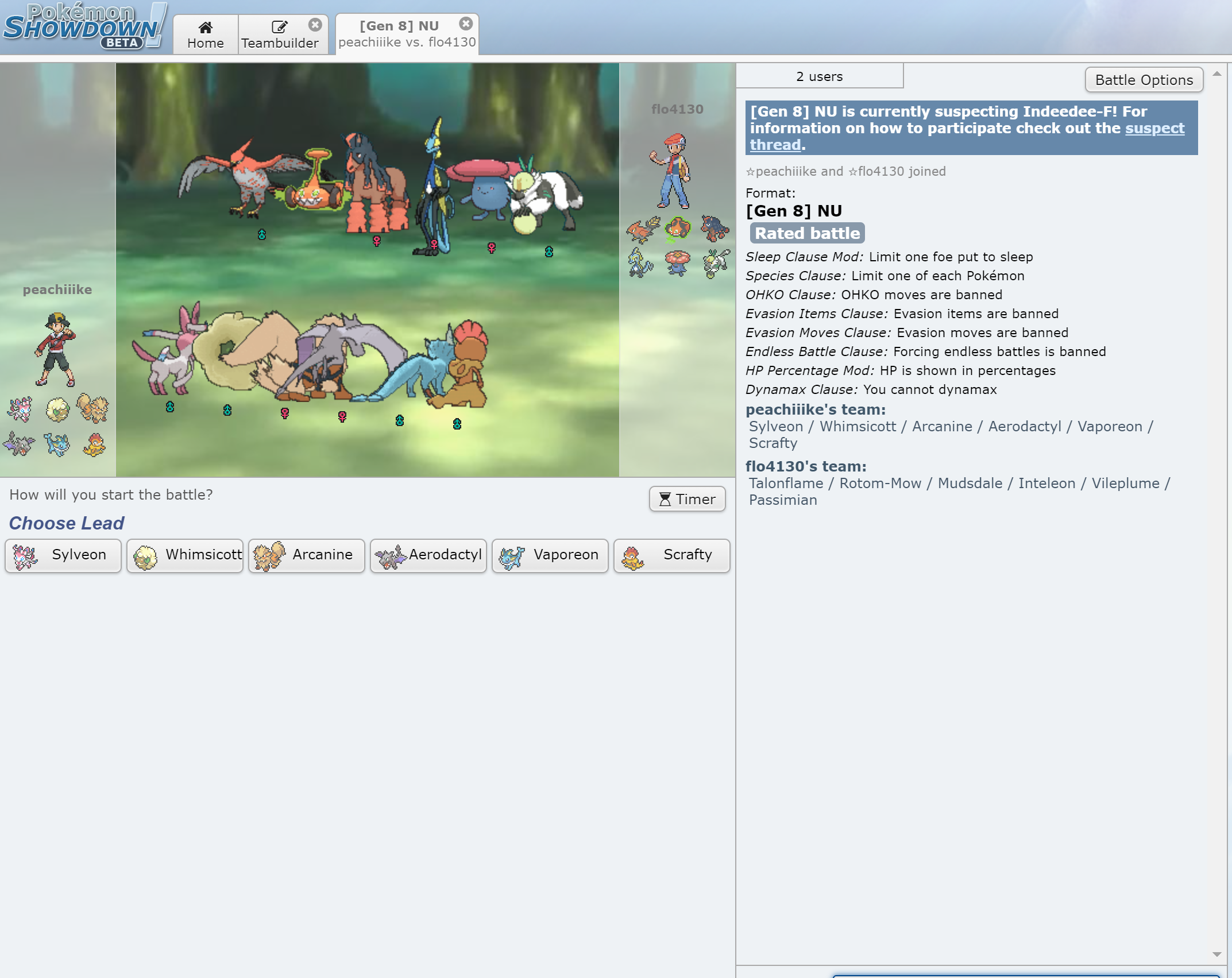When the topic of metagames was brought up for class this week the first thing I thought of was competitive metagames. For me, my main exposure to the concept of metagames is through this idea of how in games there comes to be a community that establishes a “competitive metagame” which pretty much is just a set of rules/stipulations to how one should play the game, what characters or items they should use, and what strategies they should follow in order to succeed in the game competitively.
One interesting example I think shows how metagames can create a more competitive environment within a game is actually the Pokemon franchise. While the main games are based more on this collection aspect and going through the story with your Pokemon there is still a competitive player base of those who enjoy raising pokemon deemed competitively viable and fighting other players. With this comes the presence of numerous metagames, the most popular ones being from Smogon, a community of users who determine rulesets and pokemon within various metagames, as well as offer various competitive guides for those looking to play pokemon competitively. The Smogon metagame community also is linked with PokemonShowdown.com which is a very popular online pokemon battle simulator that simulates battles as if they were in the main series games, but applies Smogon’s rules and regulations present within their metagames. The pokemon are split into separate metagames based on the community’s perception of their usage rates and power levels and there are all sorts of clauses such as you can only put one opponent pokemon to sleep at a time to dissuade from unfun tactics that might ruin competitive integrity. Essentially, the Smogon metagame takes the anything-goes nature of pokemon battles in the main series games and applies rules and stipulations to create a more competitively viable environment.
I find it interesting how in these competitive environments there can arise these metagames that you do not necessarily need to follow but are so prevalent within the game’s competitive scene that nearly everyone follows and participates in the metagame. With pokemon, you can find people outside of PokemonShowdown.com playing wifi battles on their main series games following Smogon’s rules and most people who play the game competitively are aware of Smogon Metagame even if it is not the official ruleset for Pokemon VGC. Smogon to me is an interesting thing to look at because it is a metagame community that is just as prevalent as the official competitive format of Pokemon and has been a longtime staple of the community that is completely run by the players themselves. I find it interesting to consider how competitive environments can create metagames as those who want to approach games competitively start to establish rules and general concepts that make games more competitive, something the original games’ developers might not have intended. You don’t have to play Pokemon with any knowledge of how you should invest your EVs or what the best move set is for your pokemon, but those who are after that level of optimization and competition can compete with others within the Smogon metagame.




I think the Pokemon metagames are incredibly diverse and interesting. You have online competitive scenes such as Smogon, speedrunners, and Nuzlocking to name a few. PvP Pokemon meta is incredibly interesting because strategies that are viable in the mainline games are not that good in Smogon (ex set-up sweepers which are much harder to set up against a human opponent). Furthermore, switching is hardly considered in mainline games but is a staple in predicting your opponents moves in PvP. The importance of switching is what lead to the rise of hazards which lead to the rise of the anti-hazard metagame. Pokemon themselves address these metagames with changes within the mainline game. For example, Rapid Spin used to be the only form of hazard removal. In Gen 6, however, GameFreak decided to give that capability to Defog as well, creating a whole new element to hazards and hazard removal and making flying types even more important (as they were the type that had the most access to the move). The interactions between metagames and the developers should be studied more.
I also think it’s super interesting to look at VGC, Pokemon’s official competitive format, since it’s a metagame created by the creators of the original game. The Pokemon that are good in VGC are drastically different from those that are strong in the game, or even those that are strong in Smogon’s metagames, since most of those are singles formats (each player only has 1 Pokemon on the field at a time) instead of a doubles format like VGC (2 Pokemon on the field at a time). Even between metagames, the game completely changes–and doubly so when the Pokemon Company changes the VGC ruleset; they usually do that once every 2 months or so to deliberatly change up the metagame. This might include allowing each team to have 1 or 2 prohibited pokemon, or even disabling Dynamax, Generation 8’s gameplay gimmick. The usage rates for many Pokemon tend to change drastically between these modes, and even during a single meta, a new moveset might become popular, such as Physical Attack Regieleki–a Pokemon that had always been built with Special Attack in mind previously. Perhaps a more notable example would be Defiant Physical Thundurus as opposed to support Prankster Thundurus, but that’s a bit harder to explain in just a comment here.
I think it is very essential to have rules outside of those programmed into a game if you want to have competitive integrity in your game. One example I can think of that can apply to pretty much any game that could be considered competitive is the ban on using glitches. In some games, glitches may take a lot of skill to perform and may be generally accepted by the game’s community. However, sometimes it is basically a requirement to ban the usage of glitches because the glitches take away all other skillful aspects of the game. One example I can think of is the infamous Olofmeister boost in CS:GO. Boosting players has always been a part of CS:GO, but this particular boost opened up a sightline on the map that was clearly unintended by the developers of the game. With this sightline, the opposing team was very limited in the parts of the map they could attack. As a result, the strategy aspect of the game was greatly hindered.
As I understood the term, I’m not sure “metagame” as we discussed/defined in class applies to what you’re talking about, although the game-on-top-of-a-game is a meta of sorts. I feel like this more generally falls under the idea of fan communities and modding, though, to me as I understand these terms. It’s fascinating though the way games are reinterpreted and changed through out-of-gameplay (like competitions or fan rules). I think because games are ultimately (according to some) centered around players, it’s only natural that they would shift and change games based on their needs.